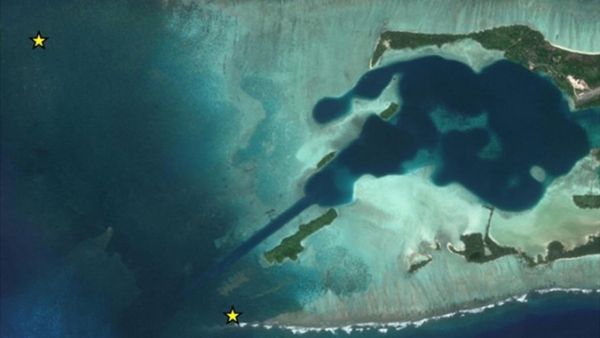The reefs at Palmyra Atoll, a small outlying atoll in the equatorial Pacific Ocean, have been undergoing a shift from stony corals to systems dominated by corallimorphs, marine invertebrates that share traits with both anemones and hard corals. A published study in Coral Reefs led by University of Hawaiʻi at Mānoa marine biology researchers discovered that although the invading corallimorph is the same species that has been there for decades, its appearance recently changed, and it became much more insidious.
Phase shifts such as this are being seen in many marine environments globally—whether due to local pollution, global climate change or natural environmental variation. Researchers from UH Mānoa’s School of Ocean and Earth Science and Technology (SOEST) wanted to determine if a new species of corallimorph was responsible for the takeover in Palmyra.
“These phase shifts are negative to our overall biodiversity,” said Kaitlyn Jacobs, lead author of the study and graduate student at the Hawaiʻi Institute of Marine Biology in SOEST. “In the last decade, Palmyra’s nearshore reefs have been invaded by corallimorph colonies that can rapidly monopolize the seafloor and reach 100% cover in some areas.”
Read more at: University of Hawaii Manoa
A map of Palmyra Atoll showing where the corallimorphs were collected. (Photo credit: Kaitlyn Jacobs)


